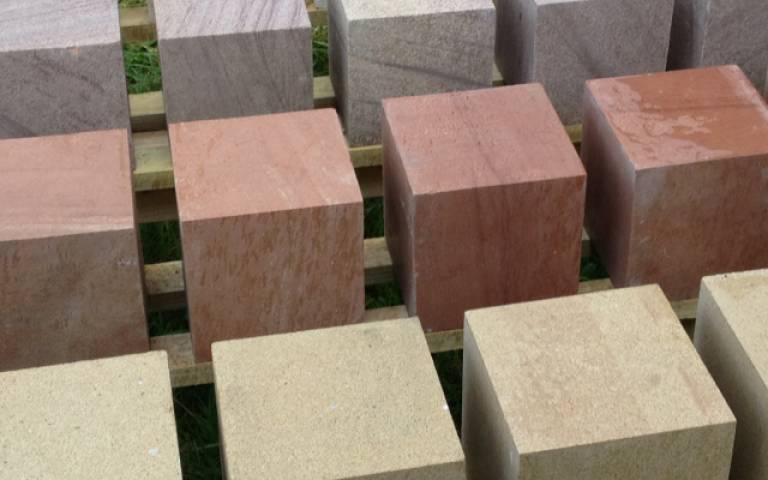SEAHA students & Mobile Heritage Lab present at the ICON conference in Belfast
26 July 2019

The Institute of Conservation’s (ICON) triennial conference took place in Belfast from the 12th to 14th of June. Hundreds of delegates from numerous national and international universities, research institutes, conservation practices and heritage organisations were present for three days of conference sessions and special events. SEAHA was well represented, with papers by Cristina, Martin and Gavin. The Mobile Heritage Lab was also parked outside the conference venue, hosting demonstrations on participatory research, machine learning and the Oddy Test.
During the presentation titled “Simulation modelling: A learning laboratory for preservation management support”, Cristina introduced the use of simulation to explore the effect of preservation options during the lifetime of archival and library collections, regarding preservation, access and costs. The proposed approached, a hybrid model combining system dynamics and agent based modelling, captures the heterogeneity of the collections and allows the use of disparate data sources. The uncertainty level of the model when reliable data is not available was also discussed.
Martin presented research on Reigate Stone decay at the Tower of London. He used non-destructive testing and environmental monitoring to link observable decay patterns to distinct micro-climates. The findings will help determine the requirements of preventive conservation strategies.
The paper that Gavin presented at ICON was on his earlier work designing an algorithm for rock carving outlining and identification beneath lichen using Stonehenge as a case study. He also presented his current work using a supervised machine learning method to automatically identify the presence of carvings on bare rock surfaces.
The conference programme was huge. The first conference day saw guided tours of important heritage sites in and around Belfast, including the city’s street art and murals and Hillsborough Castle. The next two days saw 7 parallel sessions on topics ranging from textiles to ethnography, leadership to new conservators, and heritage science to collections care. These were book-ended by plenary sessions that included keynote presentations by Eleanor Schofield on the Mary Rose and Meredith Wiggins on #climateheritage.
With so much going on it was difficult to get an overall perspective, but it was clear that the conference was bursting with ideas and energy. This was a meeting place for long-standing colleagues and newly formed collaborations. Whilst the weather didn’t always play along, Belfast provided a vibrant backdrop with all the necessary infrastructure for keeping conversations going well past the last round of questions.
The conference ended on a unique high with the mysterious sounding ‘steam jazz night’. Delegates were taken for a ride up and down the Antrim coast on a genuine steam train. The train had been lovingly restored right down to the timber panelled wagons and was resplendent with personnel and passengers in period costume and a full jazz band. Every 20 minutes or so the train would stop at a small station and the ensemble would spill out, cakewalking, lindy hopping and boogying across the platform as the jazz band hit up a jaunty tune. It was a great way to round off this conference and create some stories to be retold at the next one in 3 years time.
Author: Martin Michette
Links
 Close
Close

